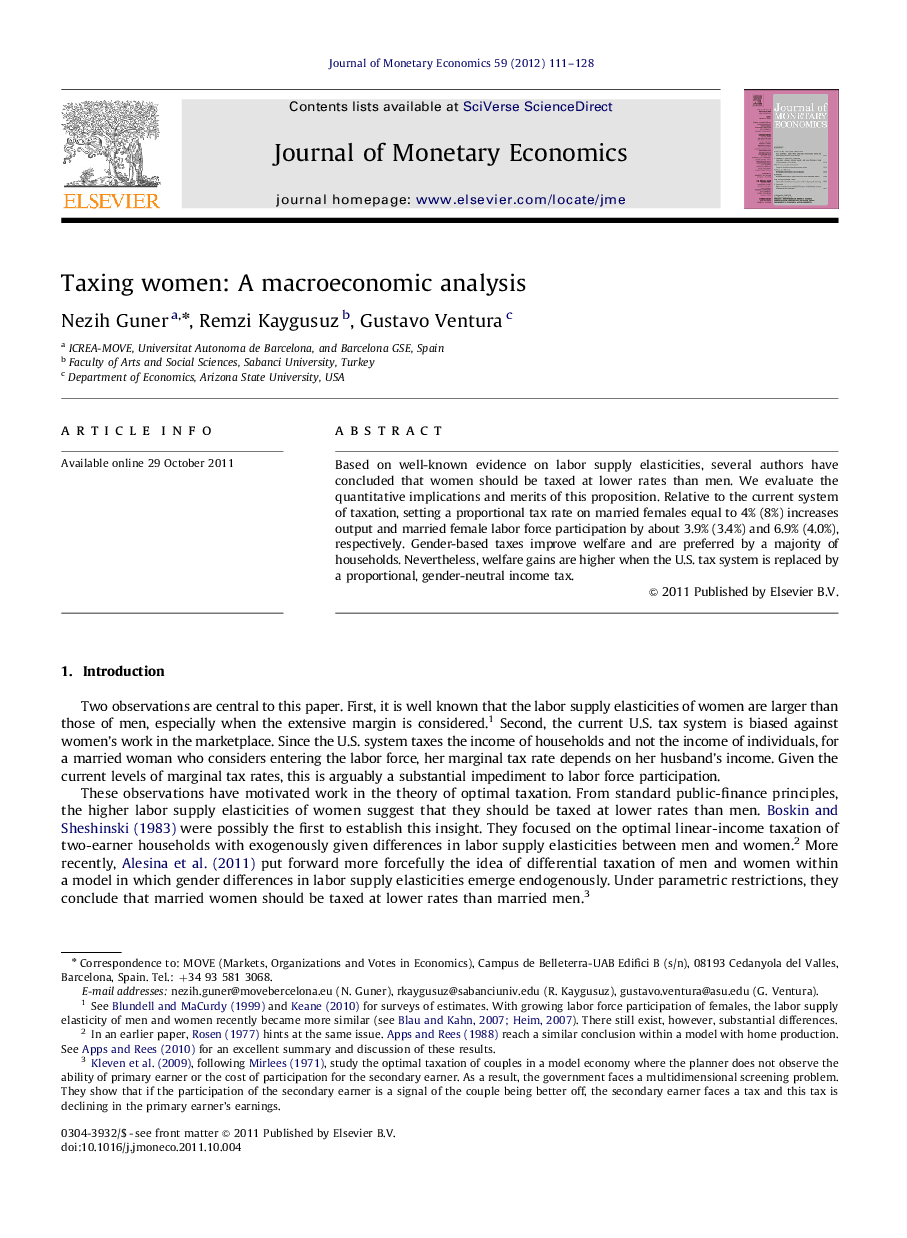| Article ID | Journal | Published Year | Pages | File Type |
|---|---|---|---|---|
| 967721 | Journal of Monetary Economics | 2012 | 18 Pages |
Based on well-known evidence on labor supply elasticities, several authors have concluded that women should be taxed at lower rates than men. We evaluate the quantitative implications and merits of this proposition. Relative to the current system of taxation, setting a proportional tax rate on married females equal to 4% (8%) increases output and married female labor force participation by about 3.9% (3.4%) and 6.9% (4.0%), respectively. Gender-based taxes improve welfare and are preferred by a majority of households. Nevertheless, welfare gains are higher when the U.S. tax system is replaced by a proportional, gender-neutral income tax.
►► We study the aggregate effects of taxing married females at lower rates. ► We present a life-cycle setup with heterogeneous married and single house-holds, costly childbearing and an operative extensive margin in the labor supply of married females. ► We find that relative to the current structure of taxation, setting a proportional tax rate on married females equal to 4% (8%) increases output and married female labor force participation by about 3.9% (3.4%) and 6.9% (4.0%), respectively. ► We also find that gender-based proportional taxes improve welfare and are preferred by a majority of people. ► Nevertheless, welfare gains are higher when the U.S. tax system is replaced by a proportional, gender-neutral income tax.
